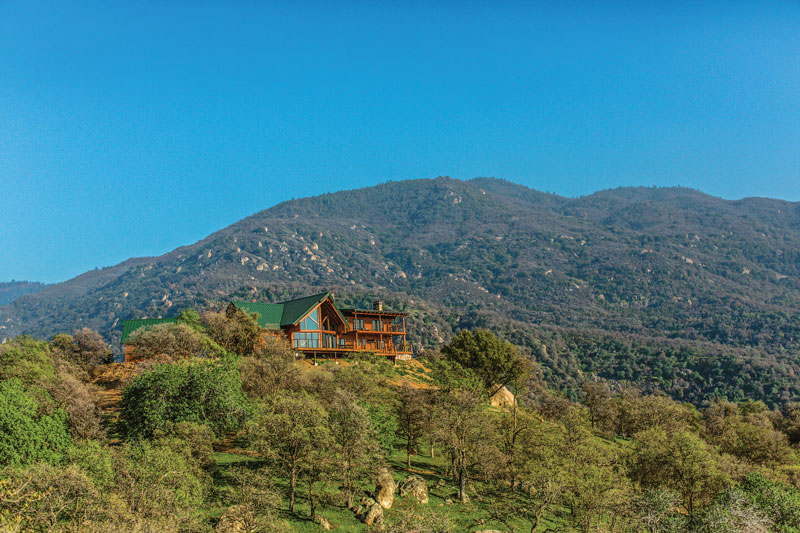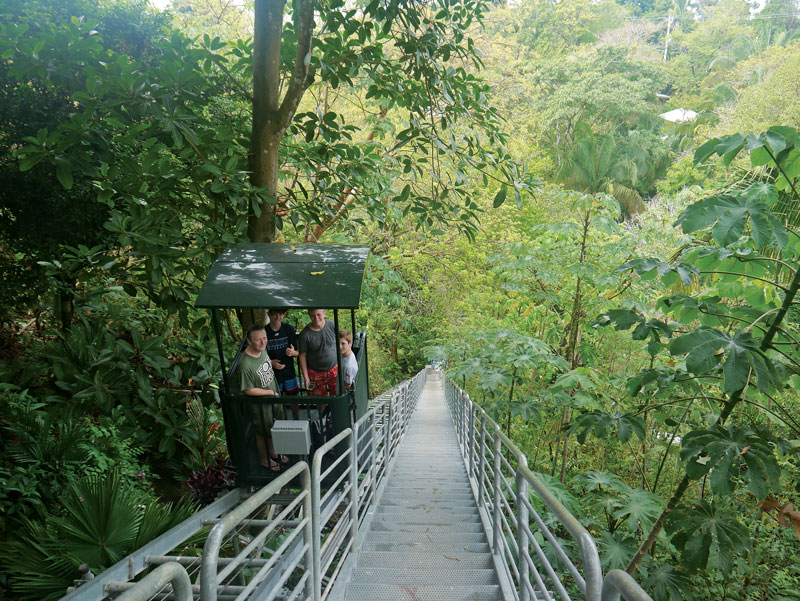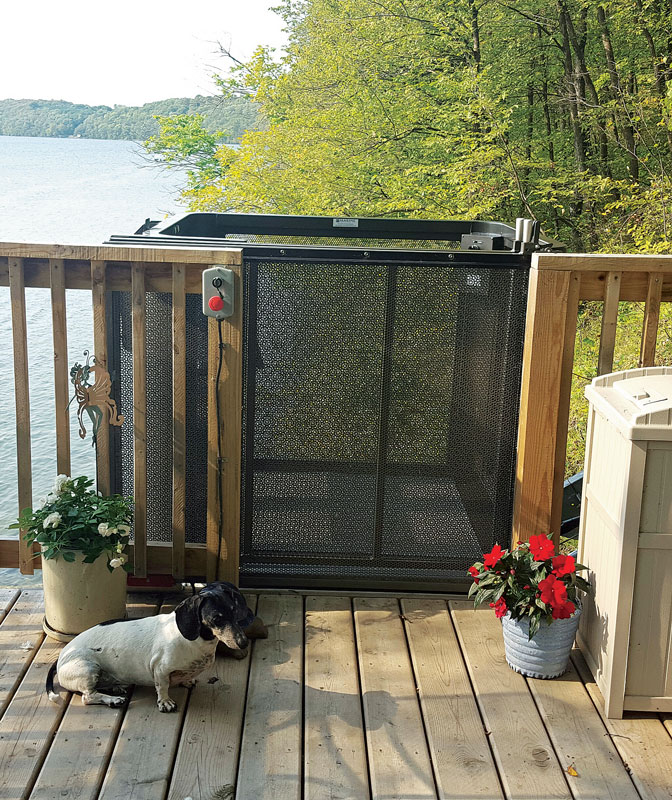By Jim Cooper
Cabins and steep slopes seem to go together. Slopes are often the best places to find the views and seclusion that make cabin living unique. But behind the appeal that goes with slopes are a few serious logistical and financial challenges. Planning for them is the best way to avoid unpleasant surprises and realize your cabin living dream to the fullest. Slope challenges fall into two categories: building on them and living with them.
Building on a slope
Steep slopes present building challenges. Heavy equipment, concrete trucks and materials suppliers all struggle with slopes. Construction typically takes longer and costs more. However, this means that such building sites are often available at bargain prices. If the premium to build on a sloping site is less than the reduced land cost, you may have a diamond in the rough, a spectacular setting for a bargain price. You can combat the construction cost premium by careful design. For example, on very steep slopes, basements become costly. Specialized excavating equipment may be required, and concrete may have to be pumped from some distance away.
Steep slopes often come with lots of rock, and that may mean blasting to get into the hillside. Clearing the building site of large trees can also become a challenge, since some clearing normally done by machine may become time intensive handwork. Combat these cost additions by using a small building footprint to minimize clearing, excavating and concrete work. “Build up rather than out” translates directly into dollars saved. Make up for a reduced footprint with spacious decks that capitalize on the spectacular surroundings. If terrain makes any kind of basement prohibitive, eliminate it. Setting your cabin on piers can save a significant amount of construction time and money without compromising your vision.
Utility challenges
Unfortunately, the foundation isn’t the only concern on slopes. Utilities – water, sewer and electricity – also present challenges. Soil suitable for a septic field is at a premium in rough terrain. Sometimes the only options are running sewer lines long distances. If gravity drainage from the cabin isn’t possible, you may have to resort to a more complex system or, in extreme cases, replacing the septic system with a holding tank. The additional installation costs for such options may make the seemingly high costs of composting toilets suddenly seem more attractive. The same holds for electricity where the costs of going off-grid may be less than the cost of bringing electricity from the nearest grid source. If you haven’t purchased your land yet, start by talking with an engineer or builder experienced in building in the area and site conditions you are considering. Get ballpark prices on the cost premium you might encounter, and then use this information in negotiating the purchase price of the land.
Getting up & down
Often overlooked in coping with a steep slope is the challenge of getting yourself and supplies to and from the cabin. First, there’s your parking area and the cabin. When you arrive at the cabin on a Friday night, luggage and groceries must be transported from your vehicle to the cabin. The ideal cabin setting may not be ideal for a driveway, which means leaving your car some distance away. While a winding woodland path may be fine for strolling, it will probably hold less appeal for unloading groceries or supplies intended to last a season. And if you have a lake cabin, there’s the need to move people, gear, food, beverages and more to the waterfront. In some cases, a simple rubber-tired wagon or garden cart may fill the bill for negotiating a pathway.
On steep slopes or when you must cover a considerable distance, you may want to invest in a stairway. And there is the option of investing in mechanical help. Trams, lifts and incline elevators provide mechanical assistance in moving people and materials through rugged terrain. These can range from simple cable operated lift baskets to enclosed gondolas. While they may seem expensive, weigh them against avoided construction costs for a road or all weather walkway. Gravel drives on steep slopes are costly to install and require ongoing maintenance in the form of periodic re-grading and additional gravel. According to Mike Botzet of Marine Innovations, typical residential systems cost in the neighborhood of $30,000-40,000. In rough terrain, this may be a bargain compared to a good roadway. In addition to construction cost advantages, a lift system can mean less intrusion into the landscape and a reduced need to engineer for drainage.
While this might seem like a good do-it-yourself project, the engineering and construction challenges of making such systems safe and reliable require the skills of professionals. Botzet also warns against home-grown solutions. “Many states require the use of licensed contractors. In cases where a license isn’t required, we always require an inspection.” Planning and preparation are the keys to dealing with slopes. Seek advice from professionals with experience building on difficult sites. Be wary of shortcuts. Upfront savings may translate into excessive maintenance costs over time. But don’t be afraid to tackle steep slopes. With careful planning, the results can be spectacular.
Jim Cooper, a former home builder and General Contractor, is author of “Log Homes Made Easy” and “The Log Home Project Planner.” He is a LEED Accredited Professional and Certified Passive House Consultant.










